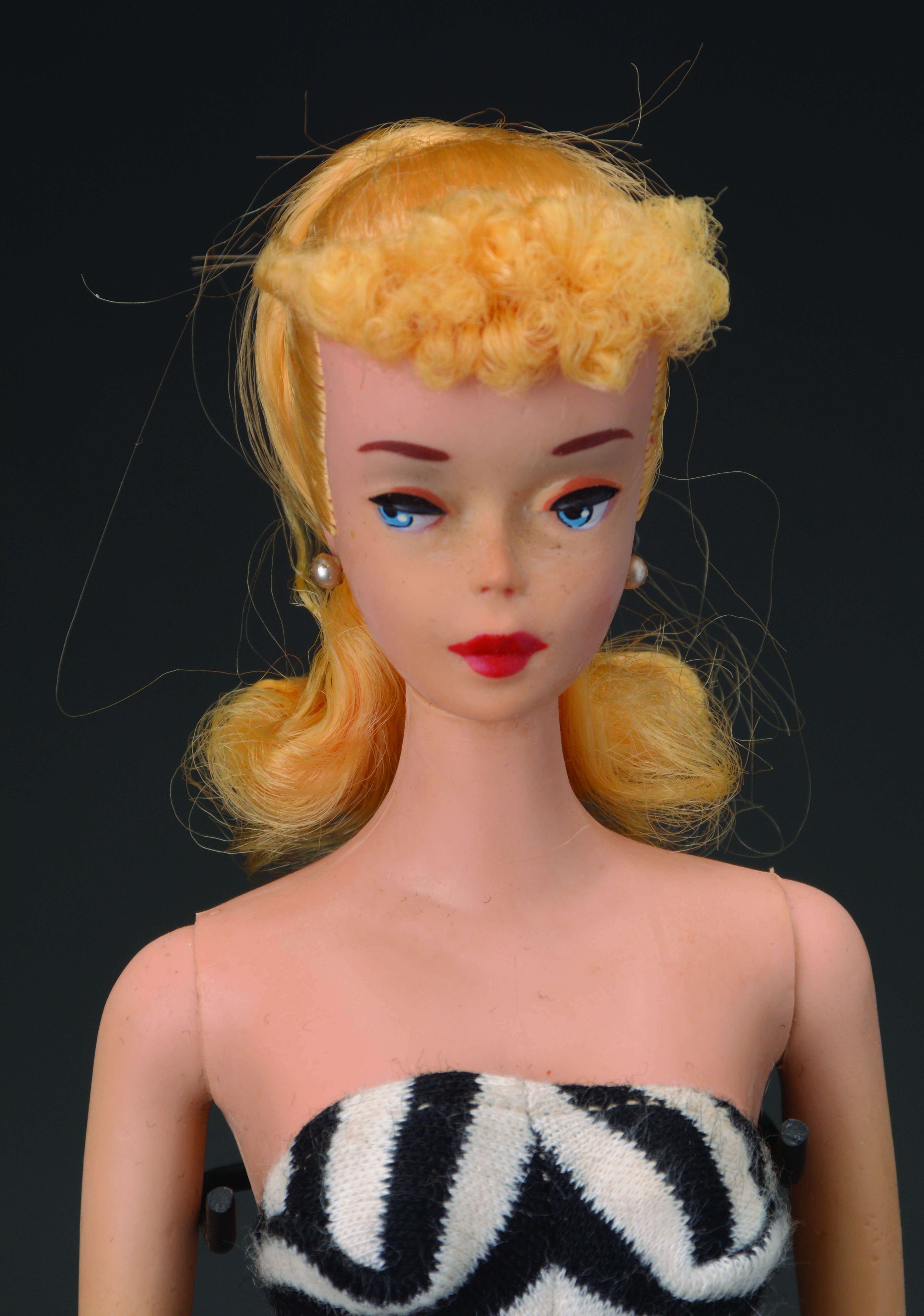Did a plastic doll truly redefine femininity and influence an entire generation? The answer, inextricably, is yes. Barbie's arrival in the 1950s wasn't just a toy story; it was a cultural revolution. This article will explore the multifaceted impact of the Barbie doll, examining her creation, design, cultural significance, and lasting legacy within the context of 1950s America.
Introduced in March 1959 by Ruth Handler, co-founder of Mattel, Barbie represented a bold departure from the baby dolls that dominated the market. Handler, observing her daughter Barbara's imaginative play with paper dolls, envisioned a three-dimensional doll that girls could project their aspirations and dreams onto. This vision culminated in Barbie's unveiling at the American International Toy Fair in New York City. With her adult-like features, fashionable attire, and endless potential, Barbie immediately captured the hearts and minds of young girls across the nation. She was a sensation.
| Attribute | Details |
|---|---|
| Name | Barbara Millicent Roberts |
| Birth Year | 1959 |
| Creator | Ruth Handler |
| Company | Mattel, Inc. |
| First Appearance | March 9, 1959 |
| Inspiration | Ruth Handler's daughter, Barbara |
| Initial Profession | Fashion model |
For further information and details, you can explore resources from the official Barbie website or reputable historical archives. For example, the official Mattel website often provides comprehensive details about Barbie's history, evolution, and various collections.
The significance of Barbie dolls in the 1950s extended far beyond a simple plaything. They became a reflection of the aspirations and ideals of post-war American society, encapsulating the era's optimism and the idealized image of femininity. As we delve into the specifics of Barbie during this decade, we'll uncover how she profoundly shaped cultural perceptions of women and continues to influence generations.
The original Barbie doll, a beacon of 1950s fashion, was designed with a sleek, glamorous aesthetic. Standing at 11.5 inches tall, she boasted a slender figure, long legs, and a cinched waist. Her iconic look included a black-and-white striped swimsuit and a perfectly coiffed ponytail. These design elements were carefully considered to capture the essence of mid-century style, establishing Barbie as a trendsetter from her inception.
- Realistic facial features with painted makeup
- Articulated limbs for various poses
- Fashionable clothing representing the latest trends
- Accessories such as sunglasses and hats
Fashion's Influence
Barbie's fashion sense was a direct response to the prevailing trends of the time. Inspired by designers such as Christian Dior and Hubert de Givenchy, her wardrobe was a miniature representation of haute couture. Mattel introduced an ever-expanding range of outfits, reflecting the changing styles and ensuring Barbie remained at the forefront of children's fashion. She became a miniature fashion icon, influencing countless girls' tastes and aspirations.
- Step Brothers Soundtrack A Deep Dive Into The Music
- Alex Oloughlins Wife Meet Malia Jones Their Story
Variety of Dolls
The 1950s also witnessed the introduction of a diverse range of Barbie dolls. Various dolls included different ethnicities and professions. This broadening of the Barbie universe allowed young girls to imagine themselves in an expanding array of roles, enhancing the doll's appeal. By the end of the decade, Barbie had explored careers as a nurse, a fashion designer, and even a ballerina, showcasing her versatility and adaptability.
The cultural impact of Barbie dolls on American society in the 1950s is undeniable. She swiftly became a symbol of femininity and beauty, embodying the societal expectations placed upon women during that era. Barbie represented the idealized American woman stylish, successful, and independent. Her influence extended beyond mere play, shaping perceptions and inspiring aspirations.
- Encouragement of aspirational play
- Inspiration for young girls to pursue their dreams
- Influence on fashion trends and beauty standards
Barbie dolls sparked a conversation about gender roles during the 1950s. While seen as an empowering figure, her existence also raised questions about the expectations placed on women. The juxtaposition of her professional ambitions with traditional roles led to a complex discussion about femininity and female empowerment.
- Promotion of diverse career aspirations for women
- Reinforcement of beauty standards
- Balancing femininity with independence
Mattel's marketing strategies were critical to Barbie's rapid success in the 1950s. Their approach was innovative and targeted, utilizing various channels to reach young girls and their parents.
- Television advertising targeting young girls
- Collaborations with fashion designers for exclusive doll outfits
- Incorporation of Barbie into popular culture through merchandise
Television Advertising
Television proved to be a highly effective marketing tool for Barbie. The launch of the "Barbie" television commercial in 1959 showcased the doll's versatility and lifestyle, captivating audiences and driving sales. The commercial featured a catchy jingle and emphasized Barbie's fashionable appeal, creating an irresistible allure for young viewers.
Merchandising and Cross-Promotion
Mattel's cross-promotion efforts were extensive, encompassing collaborations with well-known brands and designers. This led to a diverse range of Barbie-themed merchandise, including clothing, accessories, and other products. This strategy significantly increased Barbie's visibility and desirability among young consumers, solidifying her place in popular culture.
As Barbie dolls continued to evolve, the original 1950s editions became highly sought after by collectors, their value appreciating over time. Several factors contributed to this collectibility:
- Limited production runs of certain dolls
- Unique outfits and accessories from the original releases
- Preserved condition and packaging
The legacy of Barbie dolls extends far beyond the 1950s. Over the decades, Barbie has undergone numerous transformations to stay relevant in changing societal contexts. Today, Barbie continues to inspire young girls by promoting diversity and inclusion, encouraging them to pursue their interests without limitations. She remains a potent symbol of aspiration and a reflection of evolving cultural values.
- Robert Sheehans Partner Inside His Romantic Life Career Impact
- King Von A Deep Dive Into His Life Legacy August 9 1994


